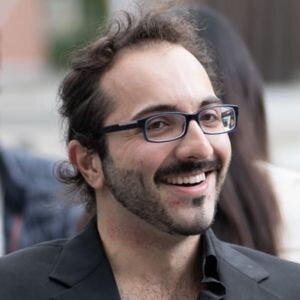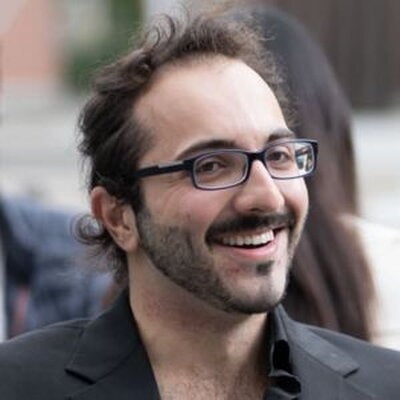

Eren C. Kızıldağ, assistant professor in the Department of Statistics, is exploring statistical-computational trade-offs in large-scale random models and advancing the mathematics of data science to tackle challenges in optimization and inference.
What drew you to the field of statistics?
I started off as an electrical engineer in Turkey and then came to MIT to do my graduate work in that field. During my master’s, I worked on medical imaging—very applied work—and kind of switched fields. Then I started taking my advisor’s class and really loved the topic. He’s an expert in applied probability and high-dimensional statistics. I started working with him, changed my focus for my PhD, and wrote a couple of papers with him on applied probability, exploring some models and related topics.
I really enjoyed my time there—the field, the depth, and the questions they were asking. As I mentioned, I was in electrical engineering, but then I moved on to Columbia for statistics, where I got a fellowship. That was a great opportunity that helped put things into context.
After experiencing both electrical engineering and statistics, I realized I really liked statistics, especially at Illinois, for a specific reason: I’m a theoretician who proves theorems and develops mathematical insights, but I also want those theorems to have practical implications. Statistics felt like the right field for that—where I can prove something and have it mean something tangible for practitioners.
What brought you to the Department of Statistics at the University of Illinois?
I knew that I wanted to do either mathematics or statistics, but of course, I applied to a bunch of schools. During the interviews, Illinois was the school I loved the most because of the department, which has great folks I could talk to, and I didn’t feel like I was an outlier.
I felt like I could fit right in. I also felt that I could bring my own perspective to this department and have colleagues to talk to. There are very strong colleagues who are experts in the field. I could talk with them intellectually and flourish a little bit more. At the same time, I also really liked the interpersonal interactions with the colleagues. They felt very friendly, warm, welcoming, and family-like.
So, when I got the offer, I was very happy.
Can you tell me about a defining moment or experience in your academic journey?
It was the spring of 2018. I left my previous research group and was doing my master’s thesis on something completely different and submitted the thesis. I wanted to do something more theoretical, and I was looking for a group.
I was not so successful in finding a group, and then, by pure luck, I ended up taking my advisor’s class, which is a class on topics in discrete probability. There is a subbranch of probability theory called discrete probability, which teaches you toolkits that computer scientists and statisticians use in their research, and part of the course is on these toolkits.
The other parts of the course were how we apply this to models in computer science, statistics, machine learning, and so on. I started taking this course, and every lecture just dragged me so much into it. So I told my advisor that I wanted to work with them. I always knew that I wanted to do more mathematical things, but that course was the defining moment.
What are your current primary research interests or projects that you’re working on?
At a high level, what I do is at the intersection of statistics, especially high-dimensional statistics, with applied probability and computer science. The overarching theme is having a large-scale model, which might come from some application, a large network, or modeling statistics where you can prove something mathematically or algorithmically. Are there gaps between the two?
For example, imagine a social network like Facebook with many nodes (people). If two people are friends, you connect these nodes. Now, if you ask, “Can I find a group where everyone knows everyone else?” this is a clique. Networks have underlying randomness, and mathematical models can predict the largest clique. However, constructing this is computationally difficult, with algorithms finding smaller cliques instead. This is the statistical and computational gap trade-off: we can mathematically prove the existence but can’t find it efficiently, often requiring exponential time.
So my work studies why these barriers to algorithms exist. And by doing so, I use a lot of tools in probability, but also insights from something called spin classes, which is a model in physics that appears in the context of explaining magnetic behavior, leading to breakthrough ideas in physics and probability that even machine learning people can see the connections to.
How do you see your research impacting your field or society in general in the long run?
In the short term, the Simons Institute at UC Berkeley facilitates collaborative theoretical research, including work in emerging fields within statistics. The program brings together scientists from institutions like Illinois and others across the US and the world. Within this group, my work is already being adopted, particularly in developing online algorithms and identifying algorithmic barriers, which others have begun to explore.
In the long term, I am optimistic that my research will provide practical benchmarks for algorithm design. For practitioners facing a problem and seeking to devise an algorithm, it’s important to ask, “How well can I do?” As I’ve hinted, there are inherent barriers—both computational and existential—that must be considered. My goal is to offer a practical framework for designing algorithms that are likely optimal. I hope my techniques will be adopted by companies or society for public use, with people saying, “Eren has this toolkit—let’s run this.”
Ultimately, my research is theoretical, but I anticipate it could have a significant long-term impact, particularly in establishing benchmarks for algorithm design.
What do you enjoy most about working with students?
What I love the most about my interactions with students is when they ask a good question that I haven’t thought about. It’s not only that they learn from me, but I learn from them as well. I love that aspect the most because they ask such thoughtful questions. It makes me think, “Wow, this is something I haven’t considered before—it’s a great point.” I’ve had this experience not only in research but also when I was teaching before.
I think one of the most rewarding parts of academia is that you get to interact with like-minded people. You’re constantly learning new things from them, and you’re surrounded by an amazing group of individuals.
Do you have any hobbies or interests outside of academia?
My fiancé and I love trying new restaurants and cuisines that we haven’t tried. For example, recently we discovered Lithuanian and Polish cuisine. We also love to cook dishes, especially from Turkey and Greece—my fiancée’s and my home countries—and some of the dishes that our moms used to cook back in the day.
We also love discovering new destinations in the US. We have this map and want to visit each state in the US.
If you could change one thing in higher education, what would it be?
One thing, especially at the undergrad and grad levels, is that grades play an important role in education. I think if you want to be fair to everyone, grades are one way to achieve this. But I wonder if there’s a different approach that could reduce the pressure on students. Some students respond amazingly to pressure—they thrive on it. For others, it backfires, and they struggle when under pressure.
I’ve seen examples of both types of students. That’s why I’d like to explore alternatives where education isn’t so heavily based on grading or harsh judgments. Instead, the focus could shift toward the actual learning experience. For example, if a student applied something they learned and later came back to me saying, “Dr. Kızıldağ, I took your course, and even though it wasn’t perfect, I used the topics to learn this technique for a project,” I’d love to go back and give that student an A.
Faculty profiles are an ongoing feature, so stay tuned to learn more about department faculty as more profiles are posted.
Ji Eun Kim is a staff writer for the Department of Statistics. If you have news to share, please contact the Statistics News Group at stat-marcom@illinois.edu